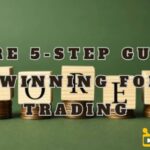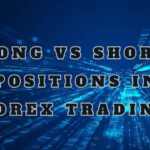Identifying “toxic” traders in the forex market involves recognizing individuals or entities whose trading behavior poses risks or potential harm to themselves, other traders, or the broker. Here are several ways forex brokers can identify such traders:
- High-Frequency Trading (HFT): Traders who engage in excessive and rapid trading activities may indicate a higher risk of volatile behavior, which could lead to significant losses.
- Excessive Leverage Usage: Traders who consistently use high leverage ratios in their trades can be risky. High leverage magnifies potential profits but also amplifies losses, potentially leading to significant account depletion.
- Consistent Margin Calls: Traders who frequently face margin calls due to insufficient funds or risky positions might signal a lack of risk management and could pose a threat to their accounts and potentially the broker’s stability.
- Large and Unhedged Positions: Traders with disproportionately large positions or those who do not hedge their positions properly might pose a threat to themselves and the market if these positions move against them significantly.
- Behavioral Patterns: Monitoring for erratic behavior, such as placing trades outside regular market hours, consistently ignoring risk management principles, or exhibiting emotional decision-making, can help in identifying potentially risky traders.
- Repeated Rule Violations: Traders who frequently breach trading regulations or the broker’s terms and conditions could indicate a disregard for established trading norms, potentially leading to harmful practices.
- Excessive Complaints or Disputes: Traders with a history of numerous complaints, disputes, or legal issues with brokers or other traders might signal problematic behavior.
- Unsustainable Profits: Traders who consistently show abnormally high profits without a clear strategy or risk management plan might engage in unsustainable or high-risk trading methods.
- Social Trading Platforms Analysis: Brokers offering social trading platforms can monitor traders’ followers and scrutinize those with significant followings but questionable trading practices.Article Sponsored Find something for everyone in our collection of colourful, bright and stylish socks. Buy individually or in bundles to add color to your sock drawer!
To identify and manage these “toxic” traders effectively, brokers often employ risk management tools, such as setting exposure limits, monitoring trading activities in real-time, implementing trading restrictions, and providing educational resources to traders on risk management practices. Moreover, constant monitoring and analysis of trader behavior, patterns, and performance can aid in early identification and mitigation of risks associated with such traders.




